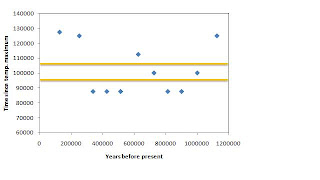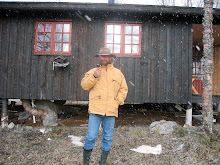Many are crying out loud for replacing our energy consumption based on fossil fuels with recycables such as solar, wind and tidal. What happens if we do?
The global annual emissions of CO2 from fossil carbon is ca. 30 Gt(1), equivalent to 11E+13 kWh of thermal energy. Recycable energy comes from the Sun, hitting the Earth with ca. 350 W/m2, a miniscule fraction of the radiation from the Sun but still totalling an incredible 1.0 E+20 kWh(2).
How much is used for basic terrestrial processes? Food production per year as photosyntesis consumes ca. 8.3 E+14 kWh(3). The annual global precipitation is ca. 500 000 km3, or nearly 1400 mm. It takes about 3 E+14 kWh to evaporate this amount of water, a process vital to the climate on earth, through the distribution of vapor and precipitation.
The fossil based energy is thus nearly 36% of the energy needed to ”create” weather, and it will make a major impact on global climate if this amount of energy is taken out of global circulation of water and energy.
(1)Carbon dioxide info centre. http://cdiac.ornl.gov/trends/emis/tre_glob.html
(2)http://www.windows.ucar.edu/tour/link=/earth/climate/sun_radiation_at_earth.html
(3)Food and agriculture organization. http://www.fao.org/docrep/w7241e/w7241e06.htm
(notation: E=exponential; E-1=0.1, E+0=1, E+1=10. 1 Joule=2.78 E-7 kWh)
Thursday, June 11, 2009
Thursday, April 23, 2009
Wednesday, March 18, 2009
Ocean cannot become more acidic and warmer at the same time
The oceans´acidity is said to change because of rising CO2 levels in the atmosphere. There are several factors that make this hard to believe, see for example(1). Firstly, a significant and lasting change of the CO2 content in the ocean is related to the content of bicarbonate (HCO3-), which is ca. 55 times the content of CO2, and to the equilibrium of both with vast amounts of solid carbonates in the sea bottom sediments and the oceanic crust. Adding CO2 in a buffered and open system such as the sea-atmosphere will not change the acidity much. Secondly, if the ocean temperature is increasing, the solubility of CO2 will be reduced, thus leading to a reduction of acidity, not an increase. The sea surface act as a barrier to increased CO2 due to low water pressure and faster heating. It is difficult to have temperature and acidity increase at the same time. The debate in the 70-80s about acidification of rivers and lakes focused on sulphur and nitrogen emissions. The problem seems to have been solved by sulpur reduction. Why were these compounds so important for the acidity in the rivers and lakes and CO2 was not, while CO2 now changes the acidity in the oceans and S and N are not?
(1) Thurman, H.V. Introductory oceanography. 5ed. Merrill Publishing Company, Columbus, Ohio, USA, 515 pp.
(1) Thurman, H.V. Introductory oceanography. 5ed. Merrill Publishing Company, Columbus, Ohio, USA, 515 pp.
Friday, March 13, 2009
Forecasting or spell casting?
The most reliable forecast for the future climate is an ice age. It is even almost certain. This forecast is purely statistical, based on reliable records dating back several million years (1,2). Since the oldest temperature records are from the 18th century we have to look at temperature depending parameters (proxies) to estimate earlier climates. They all indicate more or less the same. For the last 1 million years ice ages (glaciations) have come and gone at an interval of ca. 100,000 years, pacing with the variation in the eccentricity of the Earth’s orbit around the Sun. Of the 100,000 years 90,000 years is spent on establishing a glaciation, and it takes ca. 10,000 to get out of one (1,2,3). We are presently at the end of the 10,000 year period ending the last interglacial, and it has been 120,000-130 000 years since the last warm period (see the figure), so we should be getting ready for the next glaciation. Some see the next glaciation as 5000 years overdue (4) while others say it will be 50 000 years postponed (5).
The current forecast is a warmer climate in total contrast to the odds! Is this spell casting rather than forecasting?
Gambling is also based on statistics. If you ran a casino, and somebody asked you to base your odds on the prediction of the outcome of physical modelling, you should say they are mad. The same with the insurance business, they get reliable forecasts of future damages based on the previous ones. And in the financial markets the analysts now move like headless chickens when the marked doesn’t act as the previous average.
Meteorological forecasting is, on the other hand, based on physics, and is barely able to look more than a few days ahead, simply because the physics becomes too complex and the scale so difficult to handle. The meteorologists are trying hard and doing a good job forecasting the next day’s weather. The climatologists are, however, in trouble trying to predict the climate for the next hundred years.
References
1. Raymo, M.E., Huybers, P. 2008. Unlocking the mysteries of the ice ages. Nature 451 (Year of the planet feature): 284-285.
2. Plaziat, J.C. et al. 2008. Diagenetic rejuvenation of raised coral reefs and precision of dating. The contribution of the Red Sea reefs to the question of reliability of the Uranium-series datings of middle to late Pleistocene key reef-terraces of the world. Notebooks on Geology 2008/04: 1-35.
3. http://www.daviesand.com/Choices/Precautionary_Planning/New_Data/
4. Ruddiman, W.F. 2003. Orbital insolation, ice volume, and greenhouse gases. Quatenary Science Review 22, 1597-1629.
5. BERGER A. And M.F. LOUTRE, 2002. An Exceptionally long Interglacial Ahead ? Science, 297, pp. 1287-1288.
Figure Legend: Time between maximum sea temperatures estimated from 57 world wide bentic isotope 18O records. When there is a lot of ice, and less sea, the 18O changes leaving a signal in the sea foraminafera. Figure adapted from Raymo & Heubers, Nature, 2008. Horizontal lines indicate estimated mean value.
The most reliable forecast for the future climate is an ice age. It is even almost certain. This forecast is purely statistical, based on reliable records dating back several million years (1,2). Since the oldest temperature records are from the 18th century we have to look at temperature depending parameters (proxies) to estimate earlier climates. They all indicate more or less the same. For the last 1 million years ice ages (glaciations) have come and gone at an interval of ca. 100,000 years, pacing with the variation in the eccentricity of the Earth’s orbit around the Sun. Of the 100,000 years 90,000 years is spent on establishing a glaciation, and it takes ca. 10,000 to get out of one (1,2,3). We are presently at the end of the 10,000 year period ending the last interglacial, and it has been 120,000-130 000 years since the last warm period (see the figure), so we should be getting ready for the next glaciation. Some see the next glaciation as 5000 years overdue (4) while others say it will be 50 000 years postponed (5).
The current forecast is a warmer climate in total contrast to the odds! Is this spell casting rather than forecasting?
Gambling is also based on statistics. If you ran a casino, and somebody asked you to base your odds on the prediction of the outcome of physical modelling, you should say they are mad. The same with the insurance business, they get reliable forecasts of future damages based on the previous ones. And in the financial markets the analysts now move like headless chickens when the marked doesn’t act as the previous average.
Meteorological forecasting is, on the other hand, based on physics, and is barely able to look more than a few days ahead, simply because the physics becomes too complex and the scale so difficult to handle. The meteorologists are trying hard and doing a good job forecasting the next day’s weather. The climatologists are, however, in trouble trying to predict the climate for the next hundred years.
References
1. Raymo, M.E., Huybers, P. 2008. Unlocking the mysteries of the ice ages. Nature 451 (Year of the planet feature): 284-285.
2. Plaziat, J.C. et al. 2008. Diagenetic rejuvenation of raised coral reefs and precision of dating. The contribution of the Red Sea reefs to the question of reliability of the Uranium-series datings of middle to late Pleistocene key reef-terraces of the world. Notebooks on Geology 2008/04: 1-35.
3. http://www.daviesand.com/Choices/Precautionary_Planning/New_Data/
4. Ruddiman, W.F. 2003. Orbital insolation, ice volume, and greenhouse gases. Quatenary Science Review 22, 1597-1629.
5. BERGER A. And M.F. LOUTRE, 2002. An Exceptionally long Interglacial Ahead ? Science, 297, pp. 1287-1288.
Figure Legend: Time between maximum sea temperatures estimated from 57 world wide bentic isotope 18O records. When there is a lot of ice, and less sea, the 18O changes leaving a signal in the sea foraminafera. Figure adapted from Raymo & Heubers, Nature, 2008. Horizontal lines indicate estimated mean value.
Subscribe to:
Comments (Atom)

